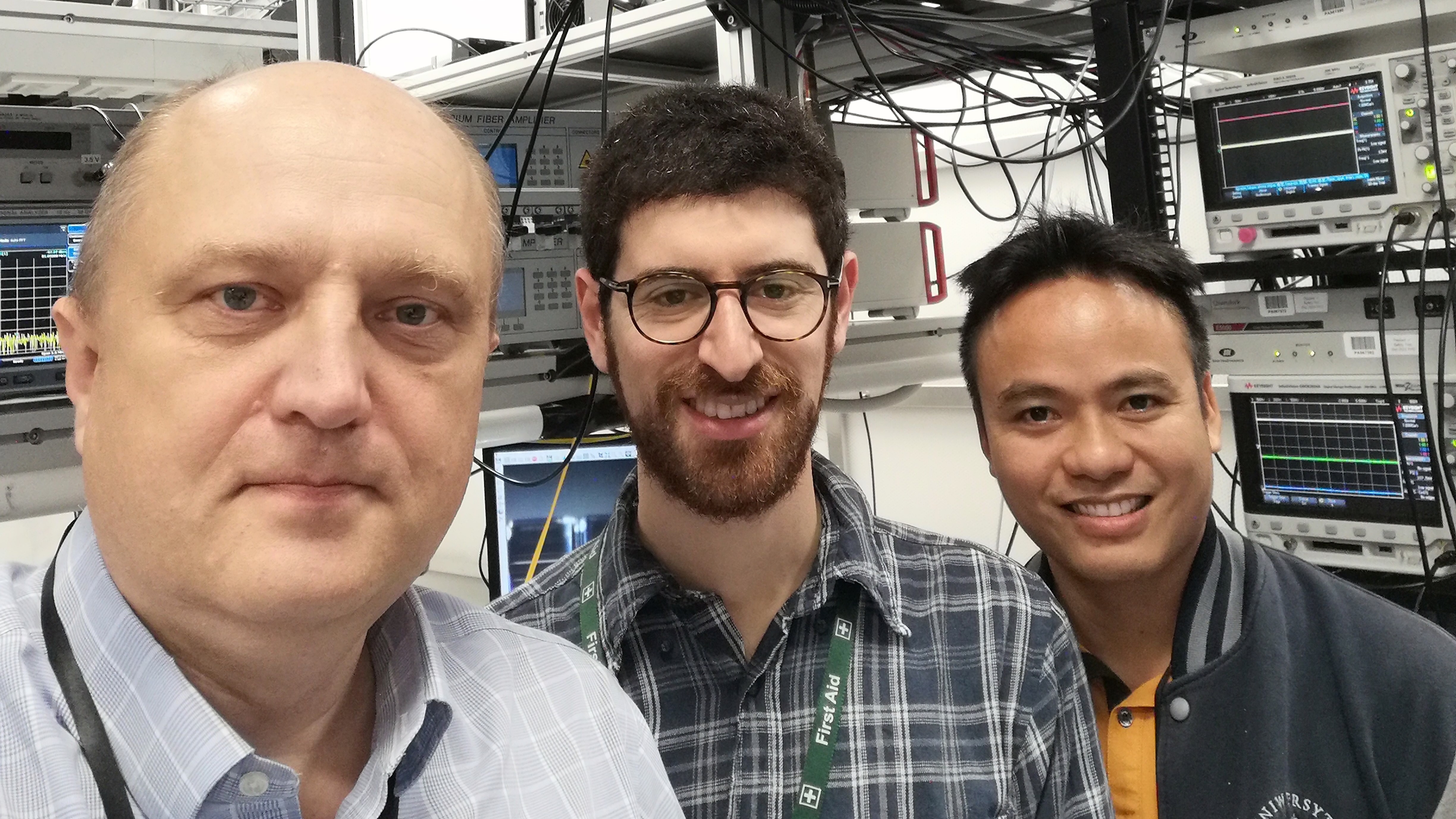Speciality optical fibre

We develop optical fibre with unusual structure and properties.
Research and publications from our members.

We develop optical fibre with unusual structure and properties.

We use our research into cutting edge optical technologies to solve real-world clinical problems.

We study and control the most fundamental properties of light.

We use light to study nanosized objects, as well as using nanosized structures to manipulate light.

Our research covers a range of topics in nonlinear and quantum optics.

We develop scientific instrumentation from open source microscopes to next-generation astronomical tools.
Find out more about us.
The Centre is formed of around 40 academics, postdoctoral researchers and PhD students who work together in an interactive and collaborative environment.
Read about our latest research activities and projects.

The Department of Physics has received Royal Society funding for collaboration with the National Physical Laboratory (NPL) and the University of Helsinki.

Physicists have created an optical fibre that uses the maths concept of topology to remain robust, thereby guaranteeing the high-speed transfer of information.

A delgation from the NATO Sensors and Electronics (SET) Panel Optical Technology Focus Group visited the Faculty of Science.

A series of workshops on photonic and laser systems in Sofia strengthen collaborations between scientists from the UK and Bulgaria.

Physicists at the University of Bath observe a new physical effect in chiral (twisted) nanoparticles.

Bath researchers are building innovative devices to access the deepest chambers of the lungs, as part of a major project to find coronavirus treatments.
Join us as a PhD student, member of staff or visitor, and access our fibre fabrication facility.

Find out how you can undertake doctoral research in the Centre for Photonics and Photonic Materials.

How to join the Centre as a fellow, member of staff, or visitor.

Find out about how we use our optical fibre fabrication facility to make speciality optical fibre and how you can access the facility for your own work.
The Centre is formed by around 30 academics, postdoctoral researchers and PhD students who work together in an interactive and collaborative environment doing cutting-edge research in Photonics.
Much of our work is based in our state-of-the-art fabrication facilities and our extensive optical laboratories, which are equipped with a wide range of laser sources and optical test gear. We also do extensive numerical modelling of both linear and nonlinear optical effects.
Contact Prof Jonathan Knight